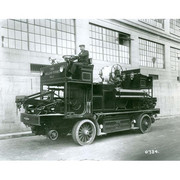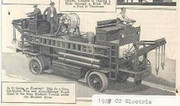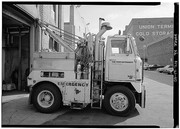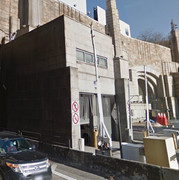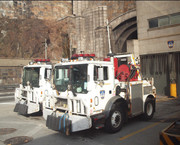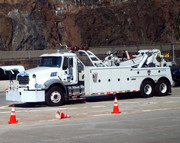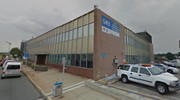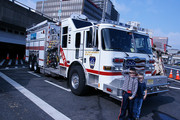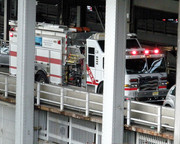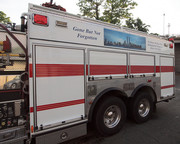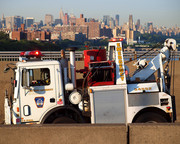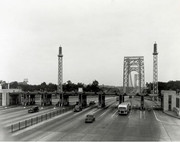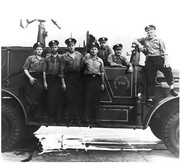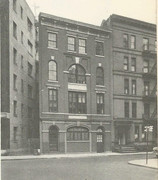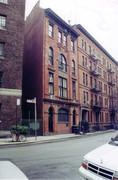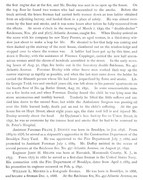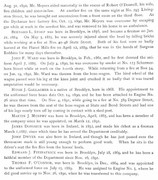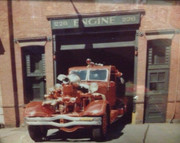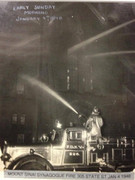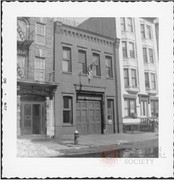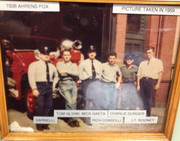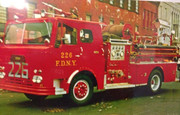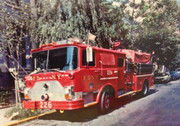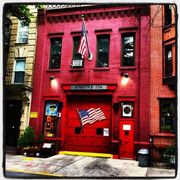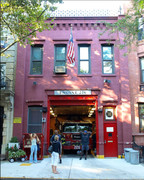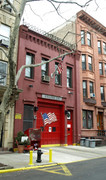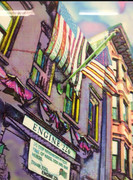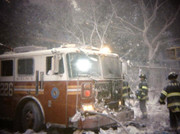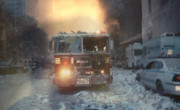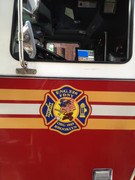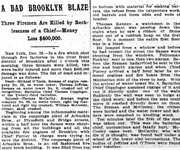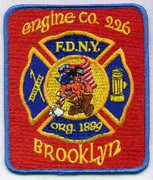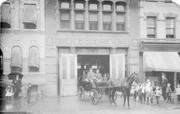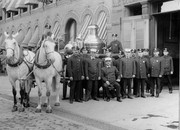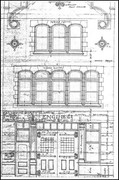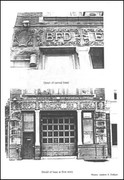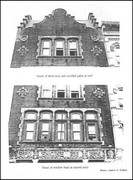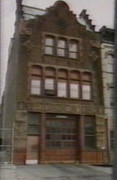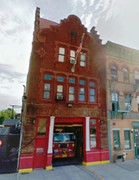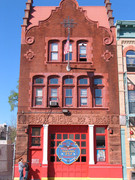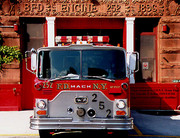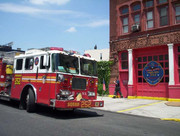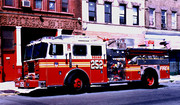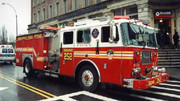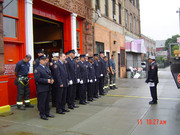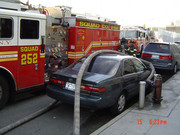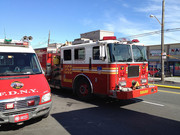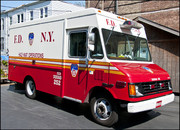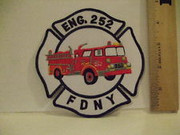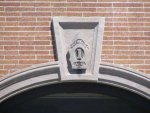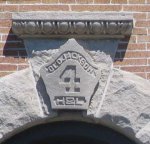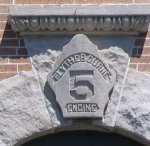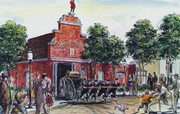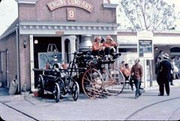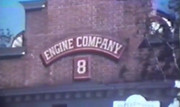Ladder 78 original firehouse 3 Brook Street Tompkinsville/St. George, Staten Island
Ladder 103 organized 3 Brook Street former firehouse volunteer Tompkins Hose Company 6 1905
Ladder 103 became Ladder 78 1913
Ladder 78 new firehouse 14 Brighton Avenue w/Engine 155 1931
Notes:
1. Tompkins Hose Company 6 was organized 1st Avenue and Richmond Turnpike (Victory Blvd) in 1890 and maintained a roster of 28 firemen. It moved to a new firehouse at 3 Brook Street, which still stands at the corner of Victory Blvd as a residence. The firehouse cost $3000 to build and served FDNY as Ladder 103 (later Ladder 78) quarters for 18 years.
2. Tompkins Hose Company 6 was part of the North Shore Fire Department (NSFD) organized in 1874 with 5 volunteer companies. The NSFD grew to approximately 15 volunteer companies (engines, ladders, hose, fire patrol) before being disbanded in 1905 when the FDNY expanded to protect SI. It had 2700 active volunteer firefighters when disbanded and many became FDNY members. FDNY purchased several NSFD firehouses and apparatus.
3. Original FDNY companies organized on SI:
Engine 201 (became Engine 151)
Engine 202 (became Engine 152)
Engine 203 (became Engine 153)
Engine 204 (became Engine 154)
Engine 205 (became Engine 155)
Engine 206 (became Engine 156)
Engine 207 (became Engine 157)
Engine 208 (became Engine 158)
Hose 7 (became Engine 159)
Hook & Ladder 101 (became Hook & Ladder 76)
Hook & Ladder 102 (became Hook & Ladder 77)
Hook & Ladder 103 (became Hook & Ladder 78)
Hook & Ladder 104 (became Hook & Ladder 79)
Hook & Ladder 105 (became Hook & Ladder 80)
Engine 51 Marine (became Marine 9)
Battalion 1 (became Battalion 21)
Battalion 2 (became Battalion 22)
Division 10 (became Division 7, then Division 8)
- update thanks to FDNYhistorian
4. New FDNY engine companies were organized with: 1 captain; 2 lieutenants; 2 engineers of steamer; and 8 firefighters
5. New FDNY H&L companies went into service with: 1 captain; 1 lieutenant; 9 firefighters
6. New FDNY hose companies were organized with: 1 officer; 4 firefighters
Ladder 78 firehouse 3 Brook Street approximately 1915:
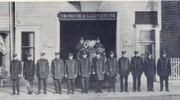
3 Brook Street former firehouse (current):

Ladder 103 organized 3 Brook Street former firehouse volunteer Tompkins Hose Company 6 1905
Ladder 103 became Ladder 78 1913
Ladder 78 new firehouse 14 Brighton Avenue w/Engine 155 1931
Notes:
1. Tompkins Hose Company 6 was organized 1st Avenue and Richmond Turnpike (Victory Blvd) in 1890 and maintained a roster of 28 firemen. It moved to a new firehouse at 3 Brook Street, which still stands at the corner of Victory Blvd as a residence. The firehouse cost $3000 to build and served FDNY as Ladder 103 (later Ladder 78) quarters for 18 years.
2. Tompkins Hose Company 6 was part of the North Shore Fire Department (NSFD) organized in 1874 with 5 volunteer companies. The NSFD grew to approximately 15 volunteer companies (engines, ladders, hose, fire patrol) before being disbanded in 1905 when the FDNY expanded to protect SI. It had 2700 active volunteer firefighters when disbanded and many became FDNY members. FDNY purchased several NSFD firehouses and apparatus.
3. Original FDNY companies organized on SI:
Engine 201 (became Engine 151)
Engine 202 (became Engine 152)
Engine 203 (became Engine 153)
Engine 204 (became Engine 154)
Engine 205 (became Engine 155)
Engine 206 (became Engine 156)
Engine 207 (became Engine 157)
Engine 208 (became Engine 158)
Hose 7 (became Engine 159)
Hook & Ladder 101 (became Hook & Ladder 76)
Hook & Ladder 102 (became Hook & Ladder 77)
Hook & Ladder 103 (became Hook & Ladder 78)
Hook & Ladder 104 (became Hook & Ladder 79)
Hook & Ladder 105 (became Hook & Ladder 80)
Engine 51 Marine (became Marine 9)
Battalion 1 (became Battalion 21)
Battalion 2 (became Battalion 22)
Division 10 (became Division 7, then Division 8)
- update thanks to FDNYhistorian
4. New FDNY engine companies were organized with: 1 captain; 2 lieutenants; 2 engineers of steamer; and 8 firefighters
5. New FDNY H&L companies went into service with: 1 captain; 1 lieutenant; 9 firefighters
6. New FDNY hose companies were organized with: 1 officer; 4 firefighters
Ladder 78 firehouse 3 Brook Street approximately 1915:

3 Brook Street former firehouse (current):



